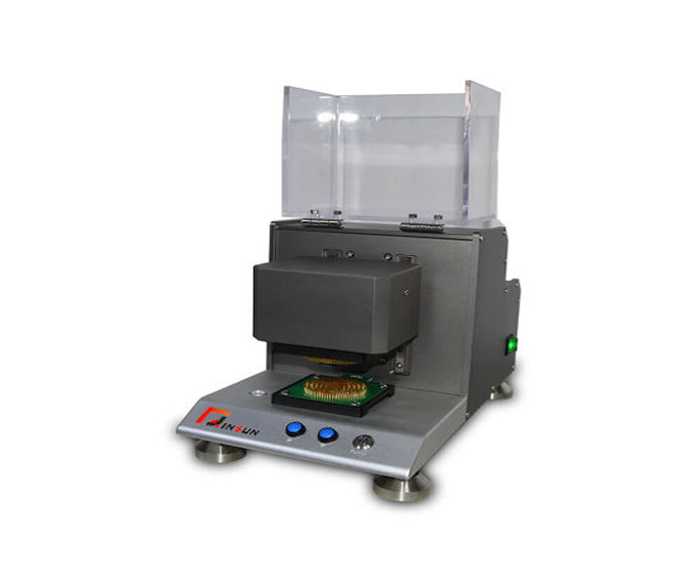
NewsInformation Center
Current situation of fabric thermal and moisture comfort testing
2024/07/11
1. Overview of research on thermal and moisture comfort of fabrics

The thermal and moisture comfort of fabrics refers to the ability of fabrics to maintain a constant body temperature between humans and the environment through heat and moisture transfer, providing favorable conditions for normal physiological functions of the human body and thus maintaining a comfortable feeling. The comfortable feeling of the human body depends on the balance of energy exchange between the heat generated by the body itself and the heat lost from the surrounding environment. As the most important indicator of clothing comfort, thermal and moisture properties have been highly valued in the textile and clothing industry in recent decades.
At present, the thermal and moisture comfort of textiles and clothing worldwide mainly focuses on the following aspects: the thermal and moisture transfer performance of textiles and clothing and their impact on comfort; Research on the dynamic moisture transfer performance of fabrics; Research and development of comfortable fabrics for sportswear and underwear; Research on new experimental methods and devices. We will now discuss the testing methods for the thermal and moisture comfort of fabrics at the current stage, as well as the research and development of comfort fabrics for sportswear and underwear, in order to roughly demonstrate the current status of fabric thermal and moisture comfort.
2. Testing method
At present, various evaluation systems and testing indicators have been established through the research of many scholars. One type is the sub item simple heat and humidity measurement. The main methods for heat measurement include cylinder method, flat plate method, warm dummy method, thermal pulse method, etc. The main methods for humidity measurement include permeable cup method, humidity gradient method, sensitive device method, etc. The other type is for measuring the comprehensive heat and humidity transfer performance. The research methods of simple heat and moisture transfer or moisture transfer only consider the temperature difference or water vapor concentration difference formed on both sides of the fabric, and the temperature difference on both sides of the fabric exists simultaneously. In the fabric, heat flow and mass flow are simultaneously transmitted and interact with each other. In order to better simulate actual wearing situations, especially in summer clothing where human sweating cannot be ignored, the method of simultaneous heat and moisture transfer should be adopted, which has become a focus of research in recent years. Instruments in this area include textile microclimate meters (including some devices with simulated skin for measuring heat and moisture transfer performance) and sweat warmers. The commonly used methods for evaluating the thermal and moisture comfort of fabrics include physical, physiological, and psychological methods.
The three main parameters that affect human perception of clothing comfort are: thermal and moisture comfort, tactile comfort, and pressure comfort. Among them, thermal and moisture comfort accounts for 50% of the overall feeling, so the liquid moisture management ability of clothing significantly affects people's perception of clothing comfort.
Thermal and humidity comfort is one of the most important subjective factors for the human body to judge the comfort level of clothing. An important heat dissipation function of the human body is achieved through the secretion of sweat and its evaporation. Water vapor carries away heat from the body or fabric surface through evaporation. Through research, it has been found that in the microclimate environment of clothing, the sweat absorption of clothing, the transmission of sweat by fabrics, and the location of evaporation on fabrics are all related to the comfort of wearing. At present, functional fabrics with good liquid moisture management capabilities are widely used in sports and outdoor clothing, high-end casual wear, and uniforms. The properties of these fabrics include quick drying, excellent moisture permeability, and sweat wicking ability (which can quickly remove sweat from the skin and keep it dry). Some traditional standards and testing methods can be used to detect these functional fabrics, such as water absorption and diffusion, core suction height, drip penetration time, moisture permeability, and drying rate. However, these testing methods cannot measure the three-dimensional transfer of liquid water on the fabric.
With the development of the textile industry, textiles with liquid moisture management performance are gradually favored by manufacturers. Since the late 1990s, under the leadership of Under Armour in the United States, numerous companies have vigorously promoted comfort products as a selling point. One of the most fundamental characteristics of comfort clothing is its excellent liquid moisture management performance.
However, it is difficult for people to compare the liquid moisture management performance between different products. Because at that time, the testing was limited to wool effect testing or droplet testing, which tested the ability of fabrics to transfer liquids. When testing, place the fabric vertically into the sink or drop water on the fabric, and then test the degree to which the water penetrates the fabric. The limitation of these testing methods is that they can only measure within
3. Liquid Moisture Management Tester (Moisture Tester)
The liquid management characteristics of fabrics depend on their water resistance, water repellency, water absorption capacity, as well as the capillary effect, geometric state, and internal structure of fibers and yarns. Although some current testing methods can simply measure the water absorption, penetration, and penetration time of fabrics, they cannot measure the dynamic transfer characteristics of moisture in fabrics. The liquid moisture management tester can provide a new method for testing the moisture management ability of textile products, which can help us accurately evaluate and develop moisture wicking and quick drying clothing products.

Previous: Stone Chip Resistance Gravelometer operation
N e x t : Testing method for fabric thermal protection (radiation) performance tester



